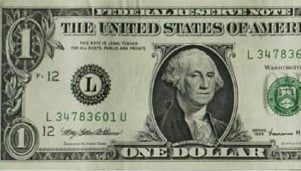12: Examining clothMany expensive collectibles are cloth, or are partially cloth. This includes baseball caps worn by famous players, Civil War uniforms displayed in museums and rare teddy bears. Some expert collectors and examiners of valuable cloth items use black light to help judge age and and check for restoration. An example is a collector checking to see if the their name plate and number are original to a jersey. An other example is collector putting a stuffed teddy bear under black light to see if the tags and stitching are modern.
Optical brighteners and modern cloth. As with paper, optical brighteners have been added to much cloth made after World War II. Used to make bright colors brighter and stain resistant, the optical brightened clothes will fluoresce a bright white or blue/white under black light. The optical brighteners will typically indicate that the cloth was made after World War II. Many 'antique' patches, hats and shirts are identified as being modern reproductions-- or at least altered or restitched after WII-- due to the presence of the presence of optical brighteners. For example, collectors of WWII military patches know that many fakes fluoresce brightly under black light.
A person who bought an antique style New York Yankees baseball cap will be able to identify it as a modern reproduction by tags and stitching the fluoresces brightly.
As many cloth items are made from a variety of cloths and threads, the optical brighteners will often appear only on parts. For example, most of a modern baseball cap might not fluoresce, but the emblem, stitching and laundry tag might. Cloth or thread that doesn't fluoresce brightly doesn't mean it isn't modern. In fact, most dark cloth don't contain optical brighteners.
It is important to note that many laundry detergents have optical brighteners, which can throw off results. If an antique shirt was washed in the washer, it may have optical brightener residue from the detergent. Though the granular detergent is usually easy to identify as detergent due to the granular, dusty pattern.
Cloth tends to lose its fluorescence with time, and very gold cloth often has no fluorescence.
Examiners and collectors identify alterations on new and old cloth by looking for clear differences in UV fluorescence. If a stuffed doll was patched up with a like color of cloth, the alteration often can be identified by fluorescence difference between the patch and the rest of the doll. This comparison and judgment requires experience both with examining cloth, and the dolls, jerseys or whatever is being examined.
In some cases, modern alterations are not identified by the added cloth but the new stitching. On an antique shirt, optical brightened thread will reveal the modern stitching. It surprising how much the thread can stand out.
The above shows a hat in visible light at top and a brightly UV fluorescing tag on in the inside at bottom. Most of the hat does not fluoresce, but the tag gives it away.
Next: Examining art glasscycleback.com............(c) david rudd cycleback, cycleback.com all rights reserved


